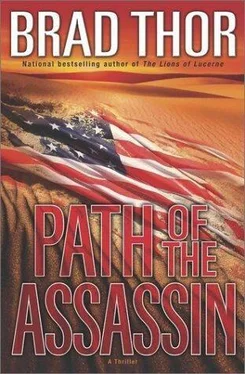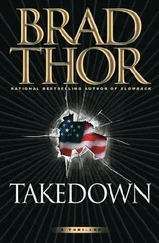Thevenin’s schematics turned out to be even more helpful than the terrorist had thought they’d be. Not only were the tunnels beneath the Al-Haram Mosque accurately detailed, but structural comments littered the diagrams as well. It only took the assassin one visit inside the labyrinth of passages to understand that the attack would be a huge success.
Knowing where all of the security measures were made the assassin’s job that much easier. The terrorist was able to proceed at a relatively leisurely pace, confident that none of the Saudi security forces knew what was going on beneath the mosque and its grand courtyard.
The assassin placed bombs strategically throughout the tunnels and enhanced their deadly force by adding aluminum azide, magnesium azide, and bottled hydrogen. While normal high explosives had a velocity of at least three thousand feet per second, these bombs would detonate with a velocity of over fifteen thousand. To add to the devastation, the assassin also lashed canisters of sodium cyanide to the bombs directly beneath the mosque in the hope that the fumes would vaporize and be sucked up into the ventilation and air-conditioning systems, as well as the stairwells and passenger tunnels-killing scores more.
The assassin knew that there was a reason what was about to happen had to happen. No longer blinded by youth and naiveté, the assassin saw the world as it was, stripped of all its pretense. It had been a mistake to think that some of those people were different. They had no hearts. They were incapable of feeling. They were not even people. They were animals who deserved to die. And they would die. All of them. It was only a matter of time.
As much as the terrorist wanted to stay to watch the explosion and its deadly aftermath, training and a strong instinct for self-preservation dictated leaving the country as quickly and as quietly as possible.
The assassin stopped at a postbox and deposited a letter to each of the most widely read Arabic dailies, Ar-Riyadh and Al-Jazirah. By the time these letters were received, the damage would already be done and the world would be closer to embracing the inevitable.
In a remote corner of North Carolina’s Fort Bragg stood a high cyclone fence patrolled by heavily armed soldiers. On the other side of the fence lay one of the most secure counterterrorism training facilities in the world-Delta Force’s famed headquarters and multimillion-dollar Special Operations Training facility.
The facility was known by many different nicknames. Some called it SOT for short, while others, because of the original stucco siding, called it the Fiesta Cantina. The real comedians liked to refer to it as Wally World, after the amusement park in the Chevy Chase movie Vacation, or the Ranch, because of early Delta Force operatives’ penchant for chewing tobacco and wearing cowboy boots. Whatever name was used, there was no escaping the fact that it was the most impressive complex of its kind.
The Ranch boasted a wide array of training areas. There were large two- and three-story buildings used for heliborne inserts and terrorist takedowns; indoor and outdoor live-fire ranges, as well as ranges for close-quarters battle, combat pistol, and sniper training; Delta’s Operations and Intelligence Center; staging grounds where mock-ups of structures in different terrorist scenarios could be constructed; and a host of other facilities and training areas too numerous to list. Simply put, the Ranch was where the best of the best came to train, and that was the reason Harvath had chosen it.
As a former SEAL, Harvath and his charge would have been welcome guests at SEAL Team Six’s training facility located in Dam Neck, Virginia, but there would have been too many questions asked. Having been on-site for the hijacking in Cairo, Delta already knew about Operation Phantom and Hashim Nidal. Plus, Delta had everything they needed right at Fort Bragg. SEAL Team Six was always jetting off someplace or other to train. They climbed oil rigs in the Gulf of Mexico, parachuted in the Arizona desert, practiced boarding tankers in Southern California, and sharpened their close-quarters battle skills at Elgin Air Force Base in Florida. Total-immersion training with Six was too widespread and would have taken too much time. Every second Harvath had with Meg Cassidy needed to be as efficiently spent as possible.
When Meg had sucker punched Rick Morrell in the middle of the Harvey Point lodge, Harvath knew he had to get her out of there. Not only was she suffocating under the routine, she wasn’t getting everything she needed in the realm of counterterrorism training. Even though she was a civilian riding along on a government operation, she was traveling with experienced soldiers and needed to learn the ropes as quickly as possible. Harvath had hoped that Morrell and his men would teach her, but when it became apparent that they weren’t going to, he marched over to the Point’s communications center and was cleared by Morrell to make two phone calls.
The first call was to Gary Lawlor, who had been appointed his liaison and, for lack of a better term, supervisor, for Operation Phantom. Once Harvath had explained the situation and had gotten Lawlor’s approval, Harvath made his second call. Within forty-five minutes, he and Meg Cassidy were packed and standing on the Harvey Point helipad as an MH-60K Special Operations helicopter, piloted by members of the 160th Special Operations Aviation Regiment, or SOAR, touched down and took them aboard. Also known as the Night Stalkers, for the pilots’ unparalleled ability to fly over all kinds of terrain in all kinds of weather using only night-vision devices, SOAR was attached to Delta Force specifically for the purpose of aviation support and getting Delta’s “guys in the skies.”
Harvath hadn’t expected a tearful farewell from Morrell and didn’t get one. He simply ferried Scot and Meg to the helipad in his Suburban, asked for their ID badges back, told Harvath to stay close to his beeper, and then drove off. Harvath had pulled some major strings and knew Morrell was seething about it, but didn’t care. The man was not running his operation correctly, and Harvath was not about to stand by and see Meg miss out on training that might save not only her life, but also the lives of her teammates. Meg Cassidy was going to get the best training the United States was capable of.
When the helicopter touched down at the Special Operations training facility at Fort Bragg, Bullet Bob was waiting. He stood off to the side of the helipad with several of the Delta Force operatives who had been part of the takedown in Cairo. When Harvath and Meg stepped out of the helicopter, Bullet Bob lifted a walkie-talkie to his mouth and said, “Let ‘em rip, T-Bone.”
From a nearby demolition range came the sound of a twenty-one-gun salute-all done with explosives. There is nothing like guys who enjoy playing with demo, thought Harvath. And so the tone for their time at the Ranch was set.
Meg Cassidy was again pushed to her limits day in and day out, but always by intelligent instructors who clearly articulated and explained the goals of the exercises.
In concert with Bullet Bob and several Delta instructors, Harvath had come up with what they believed was a thorough yet turbocharged curriculum in counterterrorism training. She was instructed in the use of weapons, including stun grenades and flash bangs; close-quarters battle, also known as CQB; room-clearing techniques; self-defense and hand-to-hand combat; land navigation; small boat operation; encrypted radio operation; and basic first aid. She excelled in everything, except the training that involved heights.
Rappelling, fast roping from a hovering chopper, and land qualifying for parachute jumping were the most difficult training sessions of all. Meg even refused to get into Fort Bragg’s vertical wind tunnel to simulate free fall unless Harvath was with her. She was deathly afraid of heights and practically had to be dragged to every session kicking and screaming. It was important to have Meg acclimated to all situations that required her to deal with heights, just in case. But, as the operation profile didn’t call for anything along those lines, Harvath eventually backed off the exercises.
Читать дальше












